Appreciating Ceramics in Architecture
Ceramics have long been a cornerstone of architectural design, weaving a rich tapestry of history, functionality, and aesthetics that continues to evolve today. From the intricate tile work of ancient palaces to the sleek, modern facades of contemporary buildings, ceramics are not just materials; they are storytellers. They speak volumes about the culture, technology, and artistry of their time. Have you ever walked into a building and felt an immediate connection to its design? Chances are, the ceramics played a significant role in that emotional experience.
As we delve deeper into the significance of ceramics in architecture, it's essential to recognize their multifaceted contributions. They serve not only as decorative elements but also as functional components that enhance the structural integrity of buildings. Imagine a stunning ceramic tile roof that not only looks beautiful but also effectively protects a home from the elements. This duality of purpose is one of the many reasons ceramics are celebrated in architectural circles.
Throughout history, ceramics have adapted and transformed, influenced by the local materials available and the cultural narratives of the people who crafted them. For instance, the vibrant mosaics of Islamic architecture reflect a deep appreciation for geometric patterns and colors, while the earthy tones of traditional Japanese ceramics speak to a philosophy of simplicity and harmony with nature. Each piece of ceramic work is a reflection of its environment, making it a vital part of architectural identity.
In contemporary settings, the innovation in ceramic technology has opened up new avenues for architects and designers. With advancements in manufacturing processes, ceramics are now being used in ways that were once unimaginable. Think about how 3D printing technology is being employed to create complex ceramic structures that push the boundaries of what we consider possible in architecture. This blend of tradition and innovation not only preserves the essence of ceramics but also propels them into the future, ensuring their relevance in modern design.
As we explore the world of ceramics in architecture, we must also consider the environmental implications of their production and use. With growing concerns about sustainability, many architects are turning to eco-friendly practices that incorporate recycled ceramics into their designs. This not only reduces waste but also adds a unique character to the buildings, as each piece tells its own story of reclamation and renewal.
In summary, appreciating ceramics in architecture goes beyond mere aesthetics. It encompasses a rich history, cultural significance, and a promising future. The next time you admire a beautifully tiled wall or a ceramic sculpture in a public space, take a moment to reflect on the artistry and craftsmanship that went into its creation. Ceramics truly are a vital part of our architectural heritage, and their story is far from over.
- What are ceramics? Ceramics are materials made from clay and other raw materials, which are shaped and then hardened by heat. They can be decorative or functional.
- How have ceramics influenced architecture? Ceramics have contributed to both the aesthetic and structural aspects of buildings, enhancing their visual appeal and durability.
- What are some examples of ceramics in traditional architecture? Examples include the intricate tile work in Islamic architecture and the use of ceramics in traditional Japanese tea houses.
- How are modern architects using ceramics? Modern architects are utilizing innovative ceramic technologies, such as 3D printing, to create unique forms and sustainable designs.
- What is the environmental impact of ceramics? The production of ceramics can be resource-intensive, but many architects are now focusing on sustainable practices, including recycling and using eco-friendly materials.
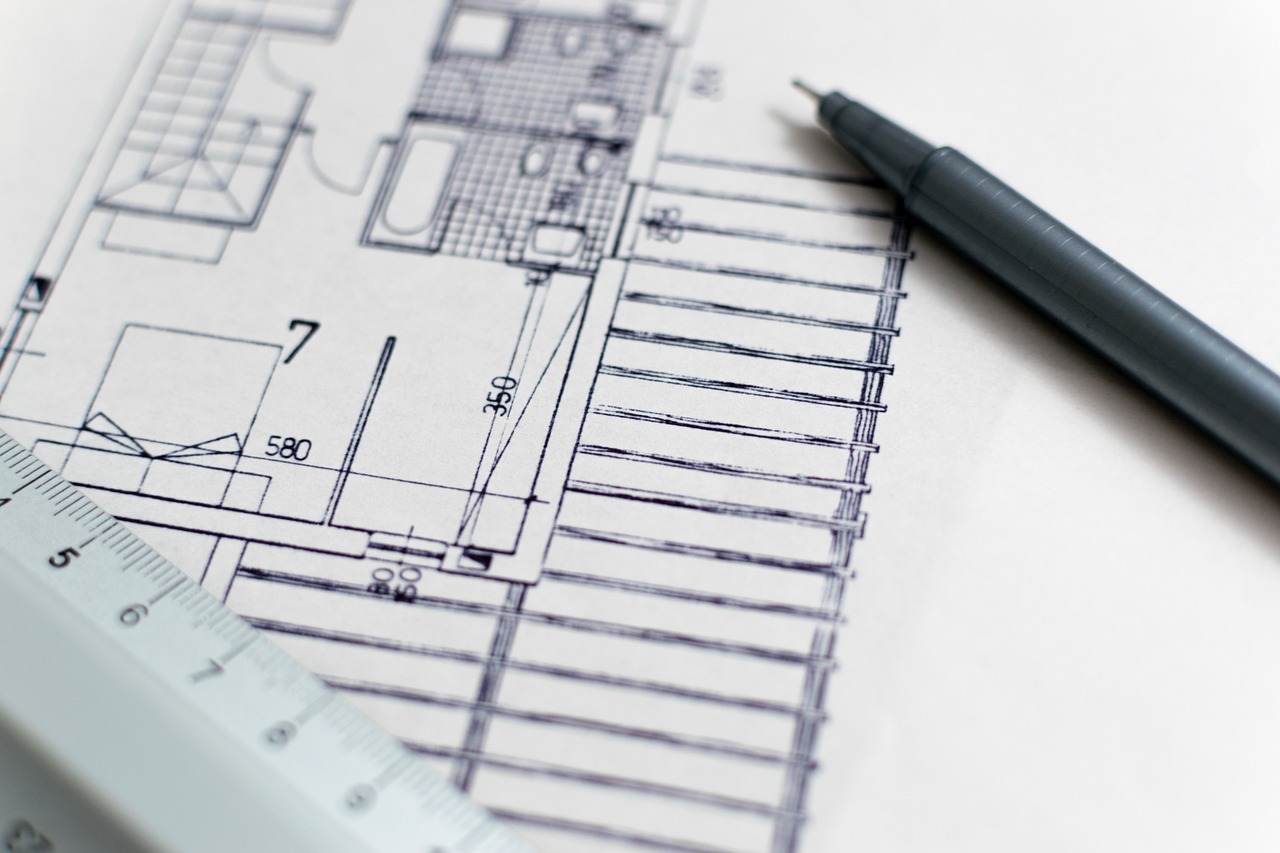
Historical Significance of Ceramics
Ceramics have been an integral part of architectural history, tracing back to ancient civilizations where they served not just as functional objects but as artistic expressions of culture and identity. From the intricate tiles of the Islamic world to the sturdy pottery of the Romans, ceramics have showcased the craftsmanship and ingenuity of societies throughout the ages. They tell stories of human innovation, adaptation, and the pursuit of beauty.
In ancient Mesopotamia, for instance, ceramics were used for both practical and decorative purposes. The Sumerians created beautifully glazed pottery that not only served as storage vessels but also as art pieces that adorned their homes. Similarly, the Greeks elevated ceramics to an art form, producing amphorae and kraters that depicted mythological scenes, thus intertwining daily life with cultural narratives. This historical significance is not just about aesthetics; it’s about how ceramics have been used to communicate and preserve cultural values.
As we move through history, we see ceramics adapting to various architectural styles and needs. In the Middle Ages, for example, the use of ceramic tiles became prevalent in Europe, particularly in the Gothic and Moorish styles. These tiles were not merely decorative; they provided insulation and protection against the elements, showcasing the dual role ceramics play in architecture. The evolution of ceramics in architecture can be summarized in the following key points:
- Functional Utility: Ceramics have historically been used for roofing, flooring, and wall coverings, providing durability and insulation.
- Aesthetic Expression: They serve as a canvas for artistic expression, reflecting the cultural and historical context of their time.
- Cultural Identity: Different regions developed unique ceramic styles that represent their cultural heritage, influencing architectural identity.
In regions like Asia, ceramics have a profound historical significance as well. The Chinese are renowned for their porcelain, which not only became a major export but also influenced global trade and cultural exchange. The intricate designs and techniques developed over centuries highlight the craftsmanship that ceramics embody. Similarly, in the Americas, indigenous cultures utilized ceramics to create functional pottery that also held spiritual significance, demonstrating the deep connection between materials and cultural practices.
As we look at the historical significance of ceramics, it’s clear that they are more than just decorative elements; they are a reflection of human creativity and adaptability. The rich tapestry of ceramic history illustrates how these materials have shaped architectural practices across different cultures and time periods, making ceramics a vital component of our built environment.
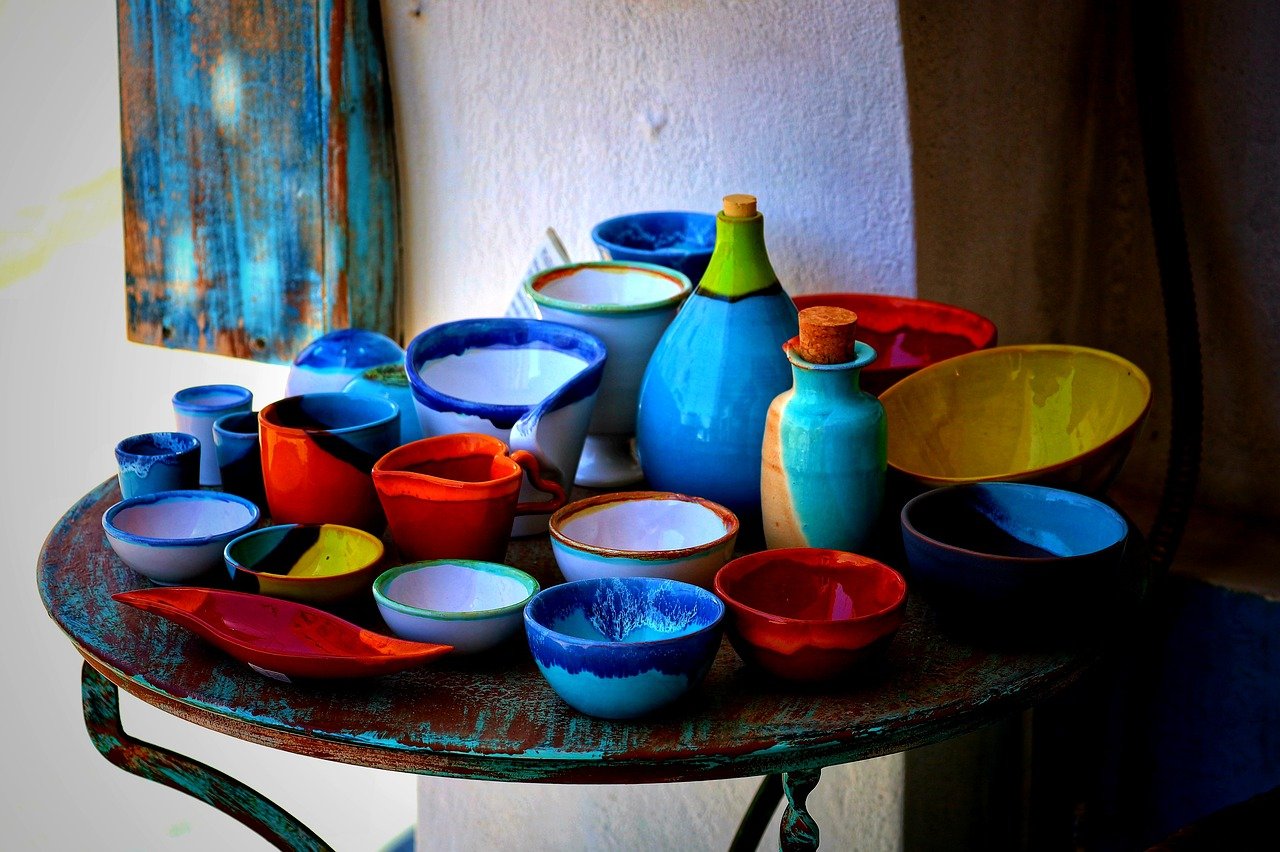
Architectural Styles Featuring Ceramics
Ceramics have long been a cornerstone in the realm of architectural design, transcending mere functionality to become a vital element of aesthetic expression. From the intricate tile work of ancient mosques to the sleek, modern facades of contemporary structures, ceramics have the power to transform spaces. In this exploration, we will delve into various architectural styles that prominently feature ceramics, showcasing how they enhance both visual appeal and structural integrity.
One of the most notable styles that embrace ceramics is Islamic architecture. Characterized by its stunning tile work, domes, and arches, this style utilizes ceramics to create mesmerizing patterns and vibrant colors. The use of ceramics in mosques, such as the famous Sheikh Zayed Grand Mosque in Abu Dhabi, exemplifies how these materials can not only serve a decorative purpose but also symbolize the spiritual essence of the space. The intricate mosaics and glazed tiles reflect light in a way that adds a divine quality to the architecture, captivating visitors and worshippers alike.
Moving on to Spanish architecture, we encounter the iconic Spanish Revival style, which prominently features colorful ceramic tiles. This style can be seen in various buildings across California, where the warmth of the tiles complements the Mediterranean climate. The use of ceramics in this context is not merely for decoration; it also serves practical purposes, such as insulation and weather resistance. The vibrant tiles often depict intricate designs, celebrating the rich cultural heritage of Spain and its influence on American architecture.
In contrast, Art Deco architecture brings a different flavor to the use of ceramics. This style is known for its bold geometric patterns and luxurious materials. Ceramics play a crucial role in creating the elaborate facades that define Art Deco buildings. For instance, the Chrysler Building in New York showcases ceramic elements that contribute to its iconic status. The combination of shiny glazes and angular shapes creates a sense of modernity and sophistication that captures the essence of the era.
On the other hand, Modernist architecture often embraces a more minimalist approach to ceramics. Designers like Louis Kahn utilized ceramic tiles in a way that emphasized simplicity and functionality. The use of ceramics in modern buildings often focuses on the interplay of light and shadow, with tiles arranged in patterns that enhance the building's form without overwhelming it. This approach highlights the beauty of the materials themselves, allowing their textures and colors to shine through.
Furthermore, Japanese architecture offers a unique perspective on the use of ceramics. Traditional Japanese homes often incorporate ceramic elements in the form of tatami mats and kintsugi pottery, emphasizing harmony with nature. The aesthetic of wabi-sabi, which celebrates imperfection, is reflected in the use of ceramics that are not only functional but also carry a story. The integration of ceramics in Japanese architecture speaks to a deep cultural appreciation for craftsmanship and the beauty of the natural world.
In conclusion, ceramics are not just decorative elements; they are integral to the identity and functionality of various architectural styles. Whether through the vibrant tiles of Islamic mosques, the colorful facades of Spanish Revival buildings, the bold patterns of Art Deco, the minimalist designs of Modernism, or the harmonious elements of Japanese architecture, ceramics enhance the narrative of each structure. As we continue to innovate and explore new applications for ceramics in architecture, it is clear that their significance will endure for generations to come.
- What are the benefits of using ceramics in architecture? Ceramics provide aesthetic appeal, durability, and versatility in design. They can enhance insulation and weather resistance, making them functional as well as beautiful.
- How do ceramics contribute to sustainability in architecture? Many modern ceramic materials are produced using eco-friendly practices, and ceramics can be recycled or repurposed, reducing waste and environmental impact.
- Can ceramics be used in modern architectural designs? Absolutely! Contemporary architects are increasingly incorporating innovative ceramic applications to create stunning, sustainable structures that push the boundaries of design.

Traditional Ceramics in Architecture
When we think about traditional ceramics in architecture, a vivid tapestry of history, culture, and craftsmanship comes to mind. These elements, which have been integral in building designs across various civilizations, showcase not only the artistry of the makers but also the stories of the communities they represent. From the intricate tiles of Islamic architecture to the rustic clay bricks of ancient Rome, ceramics have served both aesthetic and functional purposes in buildings throughout history.
One of the most fascinating aspects of traditional ceramics is their ability to tell a story. For instance, in places like Morocco, the art of zellige—a form of mosaic tilework—has been perfected over centuries. Each tile is hand-cut and assembled into elaborate geometric patterns, reflecting the region's rich cultural heritage. Similarly, in Spain, the colorful tiles known as azulejos are not just decorative; they often depict historical narratives or religious themes, serving as a visual chronicle of the area's past.
Moreover, traditional ceramics are often celebrated for their durability. Many ancient structures, such as the grand mosques of Turkey adorned with stunning ceramic tiles, have stood the test of time, thanks to the robust nature of the materials used. This durability is not merely a practical consideration; it also symbolizes the resilience of the cultures that created these works of art. The craftsmanship involved in producing these ceramics is a labor of love, often passed down through generations, ensuring that traditional techniques remain alive.
In addition to their aesthetic value, traditional ceramics also serve functional purposes. For example, in many Mediterranean regions, ceramic tiles are used for roofing and flooring, providing natural insulation against the heat. Their ability to regulate temperature makes them a practical choice for homes in hot climates, showcasing how beauty and functionality can go hand in hand. This duality is a hallmark of traditional architecture, where every element is chosen not just for its looks but also for its contribution to the overall living environment.
It's important to note the regional variations in traditional ceramics. Each area has its unique styles influenced by local materials, climate, and culture. For instance:
- Italian Majolica: Known for its vibrant colors and intricate designs, often depicting pastoral scenes or mythological themes.
- Chinese Porcelain: Renowned for its delicate artistry and often used in both decorative and functional pieces, reflecting the sophistication of ancient Chinese culture.
- Mexican Talavera: Brightly colored pottery that often incorporates local flora and fauna, showcasing the rich biodiversity of the region.
These regional styles not only enrich the architectural landscape but also enhance the cultural identity of their respective locations. The patterns and motifs used in ceramic designs often carry symbolic meanings, representing local beliefs, traditions, and narratives. For instance, in many Indigenous cultures, certain patterns may symbolize fertility or protection, while in others, they might convey stories of creation or community.
In conclusion, traditional ceramics in architecture are a celebration of human creativity and cultural expression. They bridge the gap between the past and the present, reminding us of the importance of preserving these art forms for future generations. As we continue to explore and appreciate the role of ceramics in architecture, we can find inspiration in their beauty and significance, ensuring that these stories are told for years to come.

Regional Variations
When we talk about ceramics in architecture, it's fascinating to see how different regions around the world have embraced this material in unique ways. Each culture has its own story to tell through its ceramic designs, often influenced by local resources, traditions, and environmental conditions. For instance, in Spain, the vibrant colors and intricate patterns of azulejos are not just decorative but also serve to cool buildings in the hot Mediterranean climate. These ceramic tiles have become a hallmark of Spanish architecture, showcasing a blend of functionality and beauty.
In contrast, Japanese architecture often employs ceramics in a more subdued manner. The use of shigaraki ware in traditional tea houses reflects a deep connection to nature and simplicity, emphasizing earthy tones and organic shapes. This minimalist approach not only highlights the craftsmanship but also resonates with the Japanese aesthetic of wabi-sabi, which finds beauty in imperfection.
Moving over to the Middle East, we encounter the stunning mosaics of Islamic architecture. These intricate designs are not just visually captivating; they often carry deep spiritual meanings. The use of ceramics in mosques and palaces showcases a rich history of artistry, where the interplay of light and shadow creates a mesmerizing effect. The patterns often draw inspiration from nature, geometry, and calligraphy, making each piece a work of art that tells a story.
Furthermore, in Mexico, traditional ceramics are incorporated into architecture through colorful tiles known as Talavera. These tiles are characterized by their bold colors and intricate designs, often depicting flora and fauna. They are widely used in both residential and commercial buildings, adding a splash of color and a sense of cultural identity. The craftsmanship involved in creating Talavera tiles reflects the rich history and traditions of Mexican artisans.
To better understand these regional variations, let's take a look at a table that summarizes some key characteristics:
| Region | Key Characteristics | Notable Techniques |
|---|---|---|
| Spain | Vibrant colors, intricate patterns | Azulejos |
| Japan | Earthy tones, organic shapes | Shigaraki ware |
| Middle East | Intricate mosaics, geometric patterns | Islamic tile work |
| Mexico | Bold colors, floral designs | Talavera tiles |
These regional variations not only highlight the versatility of ceramics in architecture but also emphasize how local culture and environment shape artistic expression. The stories behind these ceramic techniques are as diverse as the materials themselves, reflecting a rich tapestry of human creativity across the globe. As we appreciate these variations, we can see that ceramics are more than just building materials; they are a vital part of our cultural heritage.
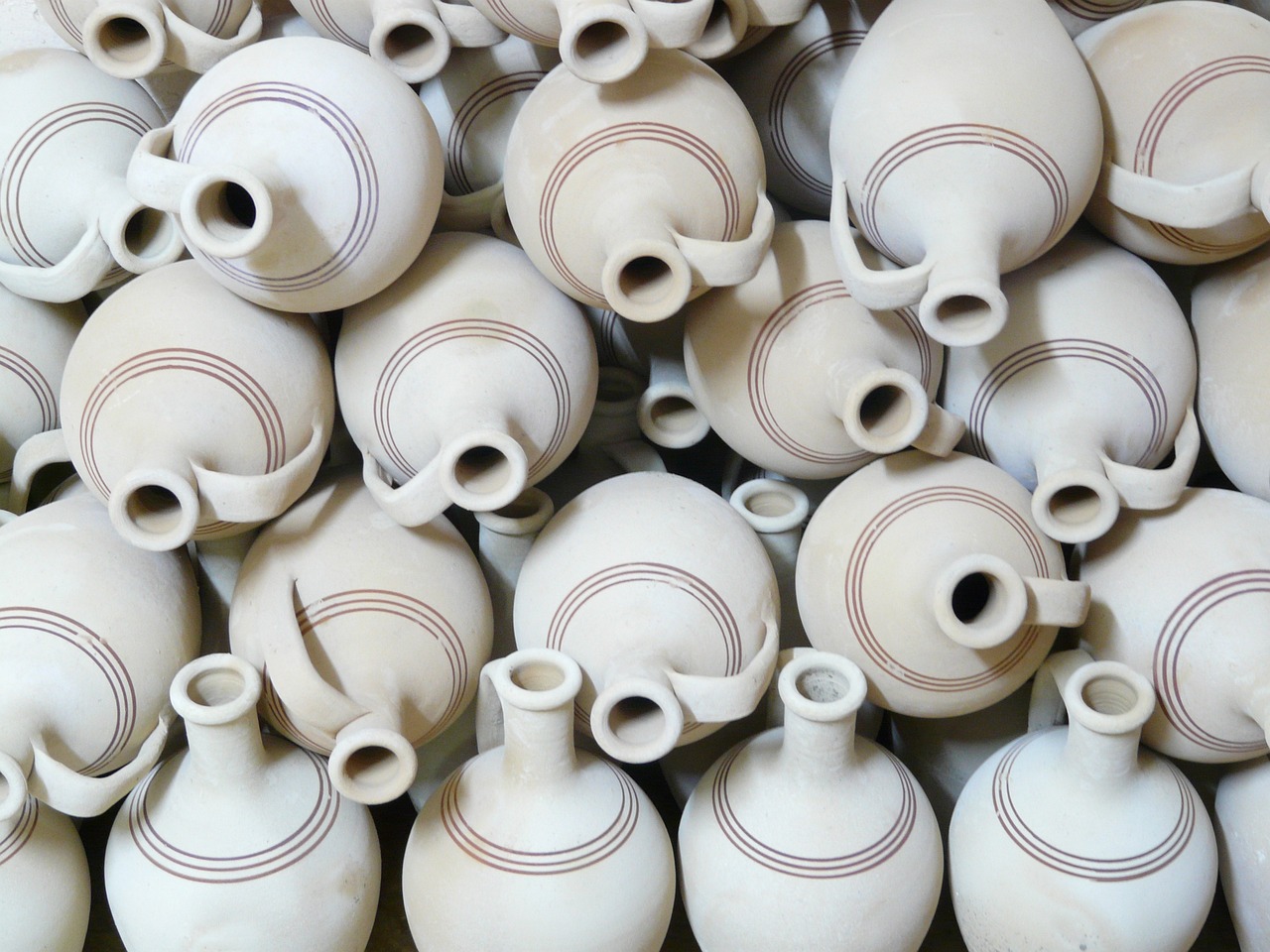
Symbolism in Ceramic Designs
Ceramics are not just beautiful objects; they are vessels of cultural narratives and symbolic meanings. Throughout history, artisans have infused their ceramic creations with symbols that reflect the beliefs, values, and stories of their communities. From ancient pottery adorned with intricate patterns to modern tiles that tell a story, the symbolism embedded in ceramic designs serves as a bridge between the past and the present, allowing us to connect with the rich tapestry of human experience.
For example, in many cultures, specific colors and patterns convey particular meanings. In Chinese ceramics, the color red is often associated with good fortune and happiness, while blue represents tranquility and peace. Similarly, in Mexican pottery, vibrant colors and motifs often depict local flora and fauna, symbolizing a deep connection to nature and the surrounding environment.
Moreover, the use of geometric patterns in ceramics can carry profound significance. Many indigenous cultures use geometric designs to represent the universe, with each shape and line symbolizing different elements of existence. These patterns are not merely decorative; they are a visual language that communicates stories of creation, spirituality, and community.
In contemporary architecture, ceramic tiles are often used to create stunning mosaics that not only enhance aesthetic appeal but also tell a story. For instance, a public building might feature tiles that reflect the history of the local area or celebrate the diversity of its inhabitants. This integration of symbolism into architectural design fosters a sense of identity and belonging, making the space more than just a structure—it transforms it into a cultural landmark.
As we look at the future of ceramics in architecture, the potential for symbolic expression continues to grow. With advancements in technology, artists and architects are exploring new ways to incorporate symbolism into their designs, using ceramics to create immersive environments that resonate with the human experience. The possibilities are endless, and as we embrace these innovations, we honor the age-old tradition of storytelling through ceramic art.
- What is the significance of symbolism in ceramic designs?
The symbolism in ceramic designs reflects cultural narratives, beliefs, and values, making ceramics a powerful medium for storytelling. - How do different cultures use color in ceramics?
Colors in ceramics often carry specific meanings; for example, red may symbolize good fortune in Chinese culture, while blue represents tranquility. - Can modern ceramics still convey traditional symbols?
Absolutely! Contemporary ceramic artists often incorporate traditional symbols and patterns into their work, blending the old with the new. - What role does symbolism play in architectural design?
Symbolism in architectural ceramics enhances the aesthetic experience and fosters a sense of identity and belonging within a community.

Modern Innovations in Ceramic Use
In the ever-evolving world of architecture, ceramics have found a new lease on life through innovative applications that marry tradition with modern technology. Today, architects and designers are not just using ceramics for their aesthetic appeal; they are also embracing their potential for sustainability and functionality. Have you ever thought about how a simple tile can transform an entire building's energy efficiency? Modern innovations in ceramic use are making this possible!
One of the most exciting advancements is the development of ceramic tiles that incorporate solar technology. These tiles can generate electricity while maintaining the beauty and integrity of traditional ceramic design. Imagine walking down a street lined with colorful, energy-producing tiles that not only enhance the visual landscape but also contribute to the energy needs of surrounding buildings. This intersection of art and science is a game-changer in urban planning and sustainable architecture.
Moreover, the rise of 3D printing technology has opened up new avenues for ceramic design. Architects can now create intricate patterns and shapes that were previously impossible to achieve through traditional methods. This technology allows for greater customization and can significantly reduce waste during the manufacturing process. It’s like having a blank canvas where the only limit is your imagination!
Another noteworthy innovation is the use of ceramics in insulation. Modern ceramic materials are being engineered to provide superior thermal and acoustic insulation properties. This not only enhances the comfort of a building but also minimizes energy consumption. In a world where energy efficiency is paramount, these advancements are crucial. For instance, buildings using ceramic insulation can maintain a stable internal temperature, reducing the reliance on heating and cooling systems.
Furthermore, the integration of ceramics with smart technology is paving the way for intelligent buildings. Imagine tiles that can change color based on temperature or humidity levels, or surfaces that can self-clean using special ceramic coatings. These innovations not only make buildings more functional but also contribute to their longevity, reducing maintenance costs over time.
To encapsulate these innovations, here’s a brief overview of some key advancements in modern ceramic use:
| Innovation | Description |
|---|---|
| Solar-Generating Tiles | Tiles that produce electricity while enhancing aesthetic appeal. |
| 3D Printed Ceramics | Customized designs that minimize waste and allow for intricate patterns. |
| Ceramic Insulation | Improved thermal and acoustic properties for energy efficiency. |
| Smart Ceramics | Tiles that respond to environmental changes and self-clean. |
As we look to the future, the role of ceramics in architecture is set to expand even further. With ongoing research and development, we can expect to see even more innovative applications that will not only enhance the beauty of our built environment but also make it more sustainable and functional. The marriage of tradition and innovation in ceramics is a testament to the adaptability of this age-old material, proving that even in a fast-paced, modern world, there is always room for creativity and sustainability.
- What are solar-generating tiles? These are ceramic tiles that can produce electricity while serving as a decorative surface.
- How does 3D printing change ceramic design? It allows for intricate and customized designs that reduce waste and expand creative possibilities.
- What benefits do ceramic insulation materials provide? They enhance thermal and acoustic insulation, leading to energy efficiency and comfort.
- Can ceramics be integrated with smart technology? Yes, innovations allow ceramics to respond to environmental changes, such as color change based on temperature.
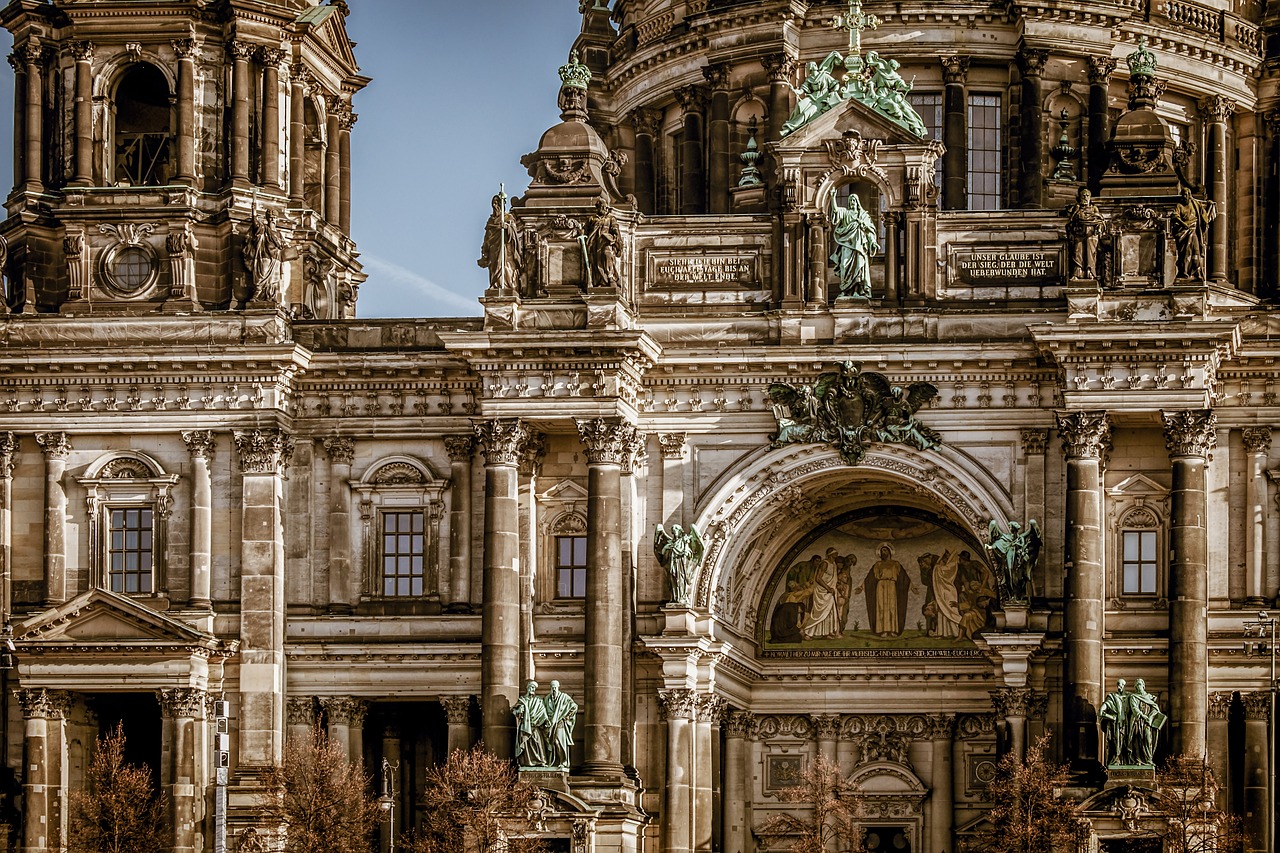
The Aesthetic Appeal of Ceramics
When we think about the aesthetic appeal of architecture, ceramics often take center stage, captivating our senses and transforming ordinary spaces into extraordinary ones. These beautiful materials are not merely functional; they serve as a canvas for artistic expression, showcasing a remarkable blend of color, texture, and form. Imagine walking through a vibrant city, where buildings are adorned with intricate ceramic tiles that tell stories of culture and history. This visual richness adds depth to the architectural landscape, making ceramics an essential element in design.
The interplay of color and texture in ceramics can dramatically alter the perception of a space. For instance, a building clad in glossy, brightly colored tiles can evoke feelings of joy and energy, while matte, earthy-toned ceramics might create a sense of calm and tranquility. Architects and designers harness these qualities to evoke specific emotions and responses from those who inhabit or visit the space. The tactile nature of ceramics also invites touch, creating an intimate connection between the structure and its occupants. This sensory engagement is a powerful aspect of architectural design.
Moreover, ceramics can be used to create stunning visual contrasts when integrated with other materials. Imagine a sleek glass façade juxtaposed with intricate ceramic detailing—this combination not only enhances the building's aesthetic appeal but also highlights the unique characteristics of each material. For example, in contemporary designs, architects often blend ceramics with metals and woods, resulting in a harmonious composition that balances modernity with tradition. The challenge lies in ensuring that these materials complement rather than compete with each other, but when done right, the results can be breathtaking.
To illustrate this further, consider the following table that showcases various ceramic applications in modern architecture:
| Application | Description | Visual Impact |
|---|---|---|
| Facade Cladding | Using ceramic tiles to cover building exteriors. | Creates vibrant, eye-catching visuals. |
| Interior Accents | Incorporating ceramics into flooring and wall designs. | Adds texture and warmth to indoor spaces. |
| Art Installations | Utilizing ceramics as artistic features or sculptures. | Enhances cultural narratives and storytelling. |
In conclusion, the aesthetic appeal of ceramics in architecture is multifaceted, enriching our built environment with color, texture, and artistic expression. As we continue to explore innovative designs, the role of ceramics will undoubtedly evolve, but their ability to captivate and inspire will remain timeless. Whether through traditional techniques or modern innovations, ceramics will always hold a special place in the heart of architectural design.
- What are ceramics? Ceramics are materials made from clay and other inorganic raw materials, which are shaped and then fired at high temperatures to achieve hardness and durability.
- How do ceramics contribute to sustainability in architecture? Ceramics can be recycled and reused, reducing waste and environmental impact. They are also often made from locally sourced materials, which can lower transportation emissions.
- Can ceramics be used in modern architecture? Absolutely! Contemporary architects are increasingly incorporating ceramics into their designs, utilizing innovative techniques and technologies to enhance both aesthetics and functionality.

Color and Texture in Ceramics
The interplay of color and texture in ceramics is nothing short of magical, transforming ordinary structures into extraordinary works of art. Imagine walking through a city where buildings are not just functional but also vibrant canvases that tell stories through their surfaces. Ceramics, with their ability to reflect light and absorb color, create a dynamic visual experience that can evoke emotions and provoke thoughts. When architects and designers incorporate ceramics, they tap into an expansive palette that can range from earthy tones to bold, striking hues. This versatility allows for a myriad of expressions, enabling buildings to resonate with their environments and the people who inhabit them.
Texture, on the other hand, adds a tactile dimension that invites interaction. Consider the rough, hand-molded surfaces of traditional ceramics versus the sleek, polished finishes of contemporary designs. Each texture tells a story, offering a sensory experience that complements the visual appeal. For instance, a building adorned with textured ceramic tiles can create shadows and highlights that change throughout the day, adding depth and intrigue to its facade. This dynamic quality not only enhances aesthetic appeal but also influences how we perceive and interact with architectural spaces.
Moreover, the combination of color and texture can dramatically alter the architectural narrative. A bright, glossy ceramic might evoke a sense of modernity and innovation, while a muted, matte finish could suggest warmth and nostalgia. This relationship is crucial in architectural design, as it helps to establish a building's identity and its connection to the surrounding landscape. For example, in a coastal town, the use of soft blues and sandy textures in ceramic tiles can seamlessly blend a structure with its beachy environment, creating a harmonious visual flow.
In contemporary architecture, we see exciting innovations where ceramics are not just decorative but also functional. Advanced techniques allow for the creation of textured surfaces that can enhance thermal performance or improve acoustics within a space. This synergy of form and function exemplifies the evolution of ceramics in architecture, showcasing their potential to contribute to both the aesthetic and practical aspects of building design.
As we look to the future, the exploration of color and texture in ceramics is bound to continue evolving. With advancements in technology and a growing emphasis on sustainability, we can expect to see even more creative applications of ceramics in architecture. Imagine buildings that not only reflect the colors of their surroundings but also adapt to changes in light and weather, creating a living tapestry of color and texture that breathes with the environment.
- What are the benefits of using ceramics in architecture?
Ceramics offer durability, aesthetic appeal, and versatility in design. They can enhance both the visual and functional aspects of buildings.
- How do color and texture affect architectural design?
Color and texture can influence the perception of a building, evoke emotions, and establish a connection with the surrounding environment.
- Are there sustainable practices in ceramic production?
Yes, many manufacturers are adopting eco-friendly practices, such as recycling materials and using sustainable resources in ceramic production.
- Can ceramics be used in modern architectural designs?
Absolutely! Modern architecture frequently incorporates ceramics in innovative ways, enhancing both aesthetics and functionality.
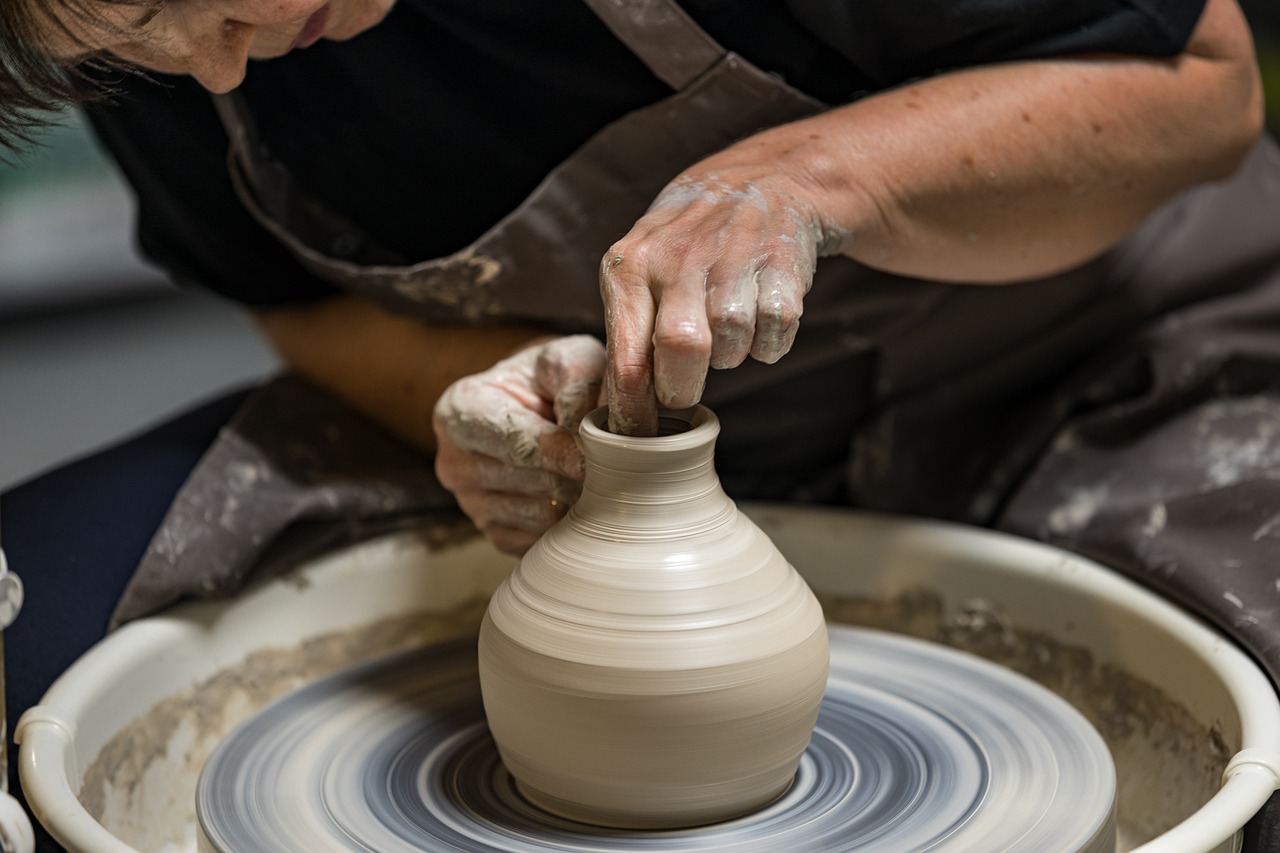
Integration with Other Materials
When we think about architecture, we often envision grand structures that stand tall and proud. But what if I told you that the magic happens not just in the design, but in the materials that come together to create these masterpieces? Ceramics have a unique ability to harmonize with other materials, leading to stunning architectural expressions that are both functional and visually captivating.
Imagine a building where the sleekness of glass meets the warmth of ceramics. The contrast between these materials can create an engaging visual dialogue. For instance, ceramic tiles can be used to clad the lower portions of a glass building, grounding the structure while allowing it to reach for the sky. This integration not only enhances the aesthetic appeal but also provides practical benefits, such as improved insulation and durability.
However, the integration of ceramics with materials like metal and wood presents its own set of challenges and opportunities. Each material has distinct properties that can either complement or complicate the architectural vision. For example, while ceramics are known for their durability, metals can be susceptible to corrosion if not properly treated. Therefore, architects must carefully consider how these materials interact over time, especially in varying climates.
One of the most exciting aspects of this integration is the potential for creating unique textures and patterns. Think about how a ceramic façade can reflect light differently than a smooth glass surface. This interplay can dramatically alter the perception of a building. Architects often experiment with layering ceramics with other materials to create dynamic visual effects that change throughout the day as the light shifts.
Moreover, the integration of ceramics with sustainable materials is becoming increasingly popular. With the push for eco-friendly designs, architects are exploring ways to combine ceramics with recycled materials, such as reclaimed wood or repurposed metals. This not only reduces waste but also adds a rich narrative to the building's story. By using materials that have a history, architects can create spaces that resonate on a deeper level with their inhabitants.
In conclusion, the integration of ceramics with other materials is not merely an aesthetic choice; it is a thoughtful approach to architecture that considers functionality, sustainability, and the emotional impact of the built environment. As architects continue to push boundaries, we can expect to see even more innovative uses of ceramics alongside other materials, leading to a new era of architectural expression.
- What are the benefits of using ceramics in architecture?
Ceramics offer durability, aesthetic versatility, and can enhance thermal performance, making them an excellent choice for various architectural applications.
- How do ceramics integrate with other building materials?
Ceramics can complement materials like glass, metal, and wood, creating unique textures and visual contrasts while addressing functional needs.
- Are there sustainable practices for using ceramics in architecture?
Yes, architects are increasingly focusing on recycling and reusing ceramic materials, as well as combining them with sustainable resources to minimize environmental impact.
- What is the future of ceramics in architectural design?
As technology advances, we can expect to see innovative applications of ceramics, including 3D printing and smart ceramics that respond to environmental changes.
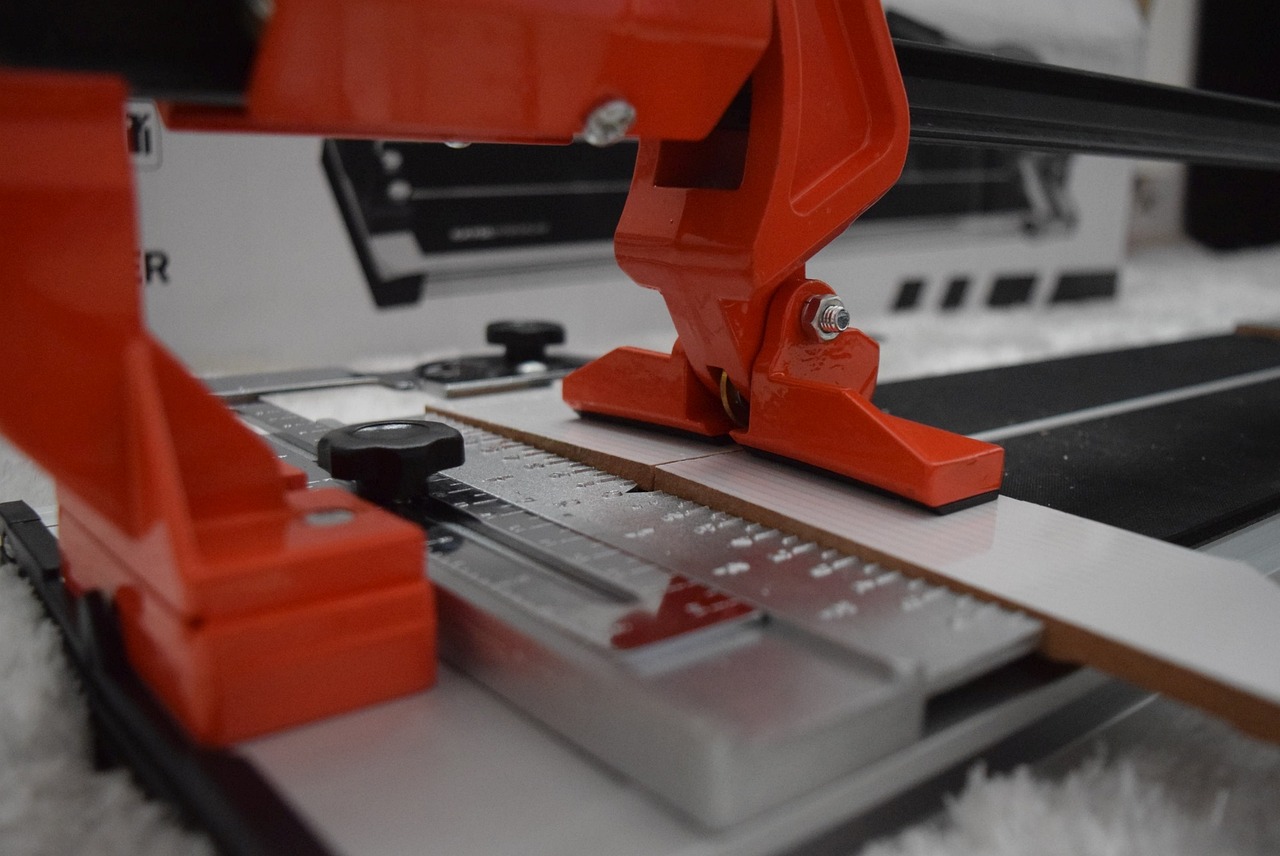
Environmental Impact of Ceramics
The environmental impact of ceramics in architecture is a multifaceted topic that deserves careful consideration. As we delve into the world of ceramics, it's essential to recognize both the positive and negative implications of their production and use. On one hand, ceramics are celebrated for their durability and low maintenance, which can lead to a longer lifespan in buildings, reducing the need for frequent replacements. This longevity contributes to a decrease in resource consumption over time. On the other hand, the production of ceramics can be energy-intensive, involving high-temperature kilns that consume significant amounts of fossil fuels. This raises questions about the sustainability of traditional ceramic manufacturing methods.
Moreover, the extraction of raw materials for ceramics, such as clay and feldspar, can lead to environmental degradation if not managed responsibly. The mining process can disrupt local ecosystems, leading to soil erosion and habitat loss. However, the industry is increasingly aware of these challenges and is taking steps toward more sustainable practices. For instance, many manufacturers are now exploring eco-friendly alternatives, such as using recycled materials or sourcing clay from sustainable suppliers.
In recent years, the concept of circular economy has gained traction in the ceramic industry. This approach focuses on minimizing waste and maximizing resource use through recycling and reuse. Ceramics, due to their inherent properties, can be repurposed in various architectural applications. For example, crushed ceramic tiles can be used as aggregate in concrete, providing a second life to materials that would otherwise end up in landfills. This not only reduces waste but also lessens the demand for new raw materials.
To further illustrate the environmental impact of ceramics, let’s look at a comparison of traditional and modern ceramic practices in terms of sustainability:
| Aspect | Traditional Practices | Modern Practices |
|---|---|---|
| Energy Consumption | High | Lower due to innovations |
| Raw Material Sourcing | Often unsustainable | Focus on sustainable sourcing |
| Waste Management | Limited recycling | Increased recycling and reuse |
| Environmental Impact | Significant | Reducing impact through innovation |
As we look to the future, it's clear that ceramics will continue to play a vital role in architecture. With advancements in technology, we can expect to see even more innovative uses of ceramics that prioritize sustainability. For example, 3D printing with ceramics is emerging as a game-changer, allowing for intricate designs while minimizing material waste. This technology could revolutionize how we approach ceramic architecture, making it not only more visually appealing but also more environmentally friendly.
- What are the environmental benefits of using ceramics in architecture? Ceramics are durable and low maintenance, which can lead to a longer lifespan in buildings, reducing resource consumption over time.
- How can ceramics be recycled? Crushed ceramic materials can be repurposed as aggregates in concrete, among other applications, promoting sustainability.
- What are modern innovations in ceramic production? Innovations include using recycled materials and exploring 3D printing technologies to reduce waste and enhance design possibilities.
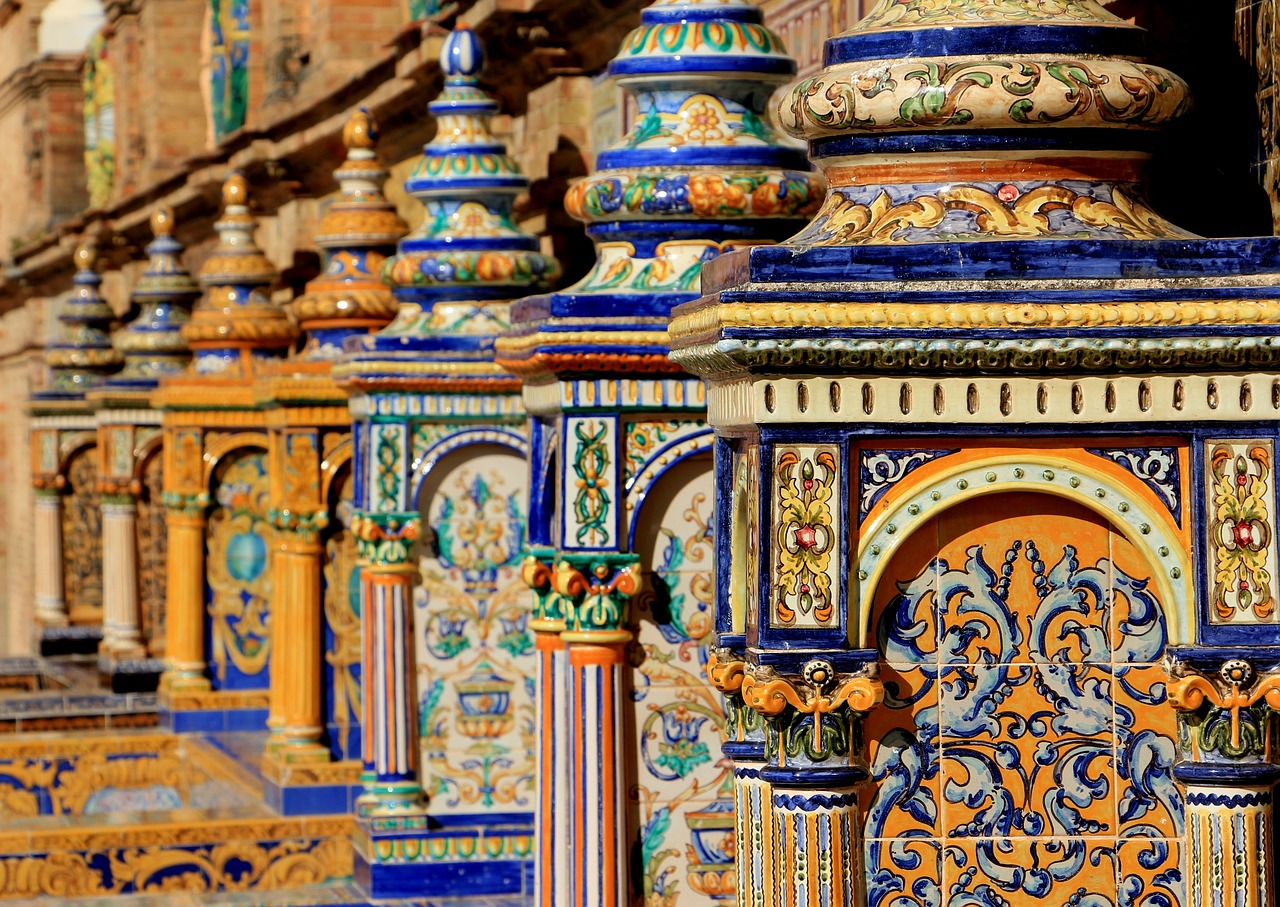
Recycling and Reuse of Ceramics
The concept of recycling and reusing ceramics is gaining traction in the architectural world, and for good reason! As we become more aware of our environmental footprint, the push for sustainable practices has never been stronger. Ceramics, often considered a waste material in construction, can actually be transformed into valuable resources. Imagine walking through a building that not only looks stunning but is also a testament to eco-friendly practices. This is the future we are aiming for!
Recycling ceramics involves several innovative methods that can significantly reduce waste and promote sustainability. For instance, broken tiles and ceramic fragments can be crushed and repurposed as aggregate in new concrete mixes. This process not only diverts waste from landfills but also gives a second life to materials that would otherwise be discarded. Additionally, ceramics can be utilized in landscaping projects, where they can serve as decorative elements in gardens or as functional components in outdoor spaces.
Moreover, the reuse of ceramics extends beyond just physical materials; it also encompasses the cultural and historical significance embedded in these items. Many artisans and architects are now incorporating reclaimed ceramics into their designs, allowing the stories of past generations to resonate within modern structures. This not only adds character to new buildings but also fosters a deeper connection to the cultural heritage of a region.
Here are some common methods for recycling and reusing ceramics in architecture:
- Crushed Aggregate: Broken ceramics can be crushed and used as aggregate in concrete, enhancing its strength and durability.
- Decorative Elements: Reclaimed tiles can be used as decorative features in walls, floors, or outdoor spaces, adding a unique aesthetic touch.
- Landscaping: Fragments can be incorporated into landscaping designs, such as pathways or garden borders, offering both beauty and functionality.
In addition to these methods, architects and designers are increasingly exploring the potential of ceramic waste in the production of new ceramic products. By utilizing waste materials, we can create a closed-loop system that minimizes resource extraction and maximizes the utility of existing materials. This not only conserves energy but also reduces greenhouse gas emissions associated with the production of new ceramics.
As we look to the future, the trend of recycling and reusing ceramics in architecture is likely to grow. With advancements in technology and increased awareness of environmental issues, we can expect to see more innovative approaches to ceramic waste management. This shift not only aligns with sustainability goals but also encourages a more circular economy in the construction industry. So, the next time you admire a beautifully designed building, remember that behind its aesthetic appeal may lie a story of sustainability and creativity!
- What types of ceramics can be recycled? Most traditional ceramics, such as tiles and pottery, can be recycled. However, they must be clean and free from contaminants.
- How is recycled ceramic used in construction? Recycled ceramics can be crushed and used as aggregate in concrete, or they can be incorporated into decorative elements in building designs.
- Are there environmental benefits to recycling ceramics? Yes! Recycling ceramics reduces landfill waste, conserves natural resources, and minimizes the carbon footprint associated with producing new materials.
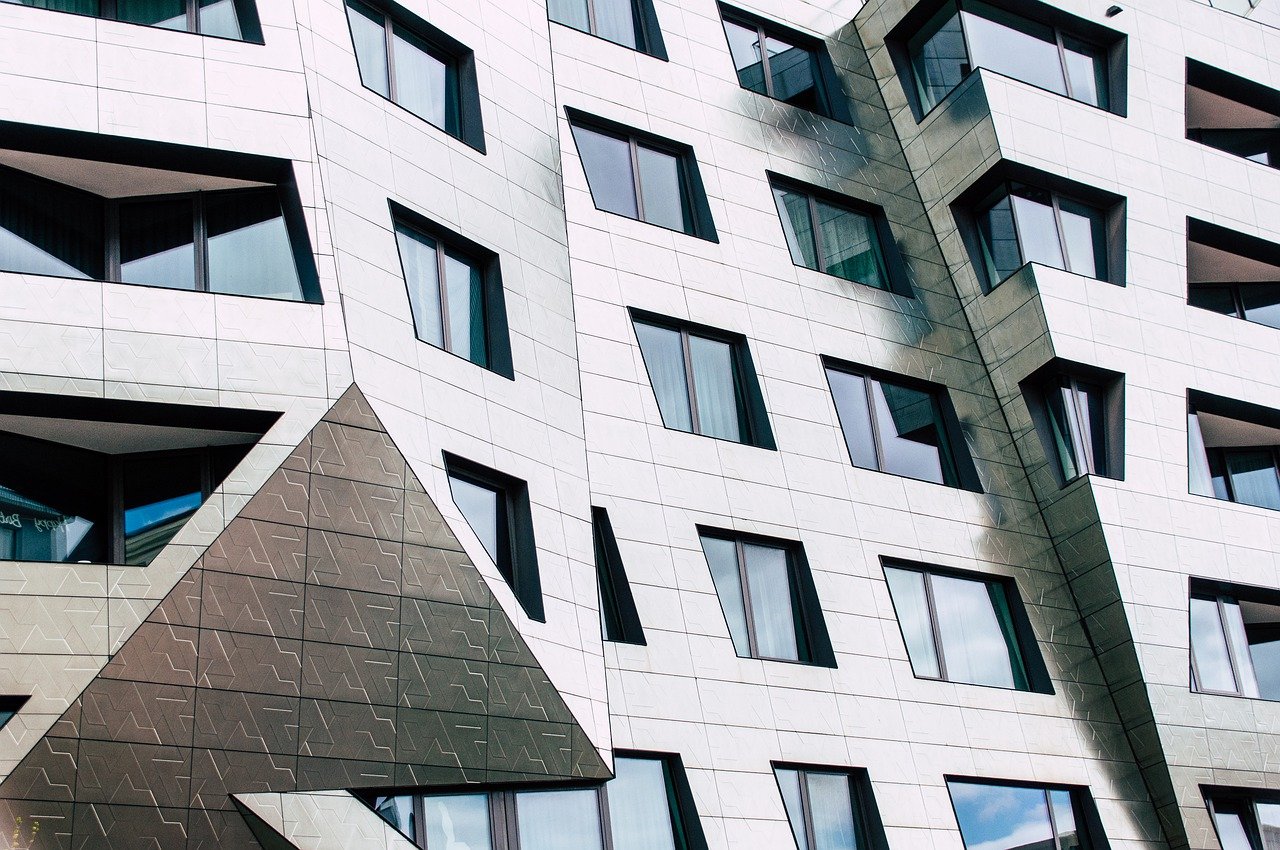
Future Trends in Ceramic Architecture
As we look to the future, the role of ceramics in architecture is poised for a transformative evolution. With advancements in technology and a growing emphasis on sustainability, architects and designers are exploring innovative ways to integrate ceramics into their projects. One of the most exciting trends is the development of smart ceramics, which can respond to environmental changes. Imagine a building that can adjust its thermal properties based on the weather, enhancing energy efficiency and comfort for its occupants. This is not just a dream; it’s becoming a reality as researchers develop ceramics that can regulate temperature and humidity.
Moreover, the trend of 3D printing is making waves in the ceramic industry. This technology allows for the creation of intricate designs that were previously impossible to achieve with traditional methods. Architects can now produce customized ceramic components that fit perfectly within their designs, leading to a new era of personalized architecture. The ability to experiment with shapes and forms opens up a world of possibilities, pushing the boundaries of what we consider architectural design.
Another significant trend is the focus on sustainable practices. As the global community becomes increasingly aware of environmental issues, the demand for eco-friendly materials is on the rise. Ceramics, being durable and recyclable, are gaining popularity as a sustainable option. Architects are now looking at ways to incorporate recycled ceramics into their designs, reducing waste and promoting a circular economy. This not only benefits the environment but also adds a unique character to buildings, as each piece tells a story of its past life.
In addition, the use of ceramics in public spaces is becoming more prevalent. From vibrant murals to functional installations, ceramics are being used to enhance community engagement and beautify urban environments. Cities are recognizing the potential of ceramics to create interactive and visually appealing spaces that resonate with the public. This trend emphasizes the cultural significance of ceramics, as they can reflect local heritage and foster a sense of identity within communities.
Finally, the integration of ceramics with other materials is expected to grow. Architects are increasingly experimenting with combinations of ceramics, glass, metal, and wood to create striking contrasts and harmonious designs. This fusion not only enhances aesthetic appeal but also improves structural integrity. The interplay of materials can lead to innovative solutions that challenge conventional architectural norms, paving the way for a new architectural language.
In conclusion, the future of ceramic architecture is bright, filled with possibilities that blend tradition with innovation. As we embrace these trends, we can look forward to a new wave of architectural masterpieces that not only captivate the eye but also contribute positively to our environment and society.
- What are smart ceramics? Smart ceramics are materials that can adapt to environmental changes, enhancing energy efficiency and occupant comfort.
- How is 3D printing changing ceramic architecture? 3D printing allows for intricate and customized ceramic designs that were previously difficult to achieve, pushing the boundaries of architectural creativity.
- Why are ceramics considered sustainable? Ceramics are durable, recyclable, and can be produced using eco-friendly practices, making them a sustainable choice for modern architecture.
- How can ceramics enhance public spaces? Ceramics can be used in murals and installations to beautify urban environments and foster community engagement, reflecting local culture and identity.
- What other materials are commonly combined with ceramics in architecture? Architects often combine ceramics with glass, metal, and wood to create unique aesthetic and structural solutions.
Frequently Asked Questions
- What is the historical significance of ceramics in architecture?
Ceramics have been integral to architecture for centuries, serving not just as building materials but also as expressions of cultural identity and craftsmanship. From ancient civilizations that used ceramics for structural and decorative purposes to modern applications, their evolution reflects the artistic and functional needs of societies throughout history.
- How do ceramics enhance architectural styles?
Ceramics add visual appeal and structural integrity to various architectural styles. Traditional designs often showcase intricate tile work, while modern architecture utilizes ceramics in innovative ways, blending them with other materials to achieve unique aesthetic expressions. This versatility makes ceramics a favorite among architects.
- What are some examples of traditional ceramics in architecture?
Traditional architecture frequently employs ceramics in both functional and decorative roles. For instance, the use of glazed tiles in Mediterranean homes or the intricate mosaics found in Islamic architecture highlight how these materials can preserve cultural heritage while serving practical purposes.
- Are there regional variations in ceramic styles?
Absolutely! Different regions have developed unique ceramic styles influenced by local materials, culture, and climate. For example, the vibrant colors and patterns of Mexican Talavera pottery contrast sharply with the muted elegance of Japanese porcelain, showcasing the diversity in ceramic artistry across the globe.
- What role does symbolism play in ceramic designs?
Ceramic patterns and motifs often carry deep symbolic meanings, reflecting the beliefs and narratives of a culture. For instance, certain geometric designs may represent harmony or balance, while floral patterns can symbolize growth and renewal, adding layers of meaning to architectural elements.
- How are ceramics being innovatively used in modern architecture?
Modern architecture is embracing ceramics in exciting ways, focusing on sustainability and aesthetic appeal. Innovations include the development of eco-friendly ceramic materials, 3D-printed ceramics, and the integration of ceramics with smart technologies, pushing the boundaries of traditional uses.
- What aesthetic benefits do ceramics provide to buildings?
Ceramics enhance the visual richness of architecture through their diverse colors, textures, and forms. The interplay of these elements can dramatically change how a building is perceived, making it more inviting and engaging for those who encounter it.
- Can ceramics be integrated with other materials?
Yes, ceramics are often combined with materials like glass, metal, and wood to create unique architectural expressions. This integration can enhance both the aesthetic and functional aspects of a building, though it also presents challenges in terms of compatibility and construction techniques.
- What is the environmental impact of ceramics?
The production of ceramics can have significant environmental implications, but there is a growing focus on sustainability within the industry. Eco-friendly practices, such as using recycled materials and energy-efficient production methods, are becoming more common, reducing the overall environmental footprint of ceramic use in architecture.
- How can ceramics be recycled or reused in construction?
Recycling ceramics in construction is a fantastic way to promote sustainability. Methods include repurposing broken tiles for landscaping or using crushed ceramics as aggregate in new concrete mixes. These practices not only reduce waste but also contribute to a circular economy in architecture.
- What future trends can we expect in ceramic architecture?
As technology continues to evolve, we can anticipate exciting trends in ceramic architecture. Innovations such as smart ceramics that respond to environmental conditions, advanced manufacturing techniques like 3D printing, and a stronger emphasis on sustainability will likely shape the future of ceramics in architectural design.



















